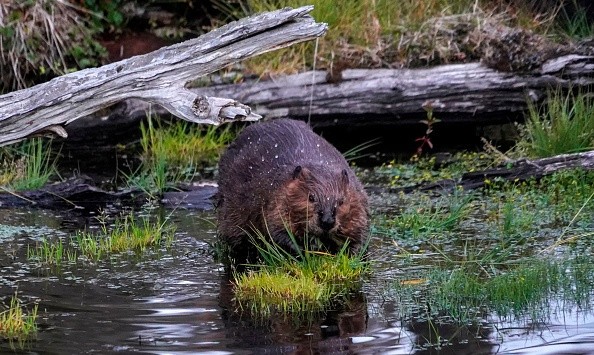When introduced in any area, beavers may have a good impact on the environment. This includes even places like the Moab Desert in Utah. And that's exactly what a team of academics has done.

How Beavers Positively Impact Their Evironment
A student at Utah State University started moving Beavers collected in other areas of the state to tiny, failing waters along the Price and San Rafael rivers in search of solution to drought and wildfires.
The delicate nature of desert hydrology is interesting. There is a lot less rain in tropical ecosystems than in temperate habitats, which means that many stay dry or have just little trickles of water for long stretches of time.
Many of Utah's tiny, sensitive streams have been extensively polluted by decades of pollution and agricultural runoff.
Beaver dams have been demonstrated to significantly increase the quality of wetlands and streams, which in turn improves the health of rivers, according to Good News Network.
Emma Doden was interested in the "ecosystem engineer" because of this service, even if the concept of beavers in the desert "raised a few eyebrows."
Doden specialises in passive river restoration in the Price and San Rafael rivers, which flow through some of eastern Utah's driest regions.
There were a lot more beavers in the system than scientists thought, and they wanted to augment it with translocated beavers, Doden said.
After infiltrating urban areas, the beavers that were relocated would have been killed, so scientist's effort provides them a second opportunity.
Advantages of Beaver Dam on the Ecosystem
An investigation on how beaver dams may defend against wildfires found that beaver dams are becoming a popular low-tech and low-cost method to develop landscape-scale climate resistance.
During dry seasons, they efficiently safeguard riparian ecosystems from droughts by slowing and storing water that may be utilised by riparian plants. Beaver dams have been shown to store enormous amounts of sediment, which is then distributed more safely throughout the river ecosystem.
Beaver dams can assist in maintaining streams clean no matter the circumstances of sedimentation, according to the findings of the research, which indicated that this is true in both naturally wild areas and those close to heavily farmed areas.
As a consequence of agricultural runoff, streams and ocean habitats may be severely deteriorated due to the silt reducing light, choking corals, and creating harmful algal blooms.

Getting Beavers to Build Dams
Beavers are being relocated to the desert in Doden's university's initiative, where they will create dams to defend against wildfires and maintaining streams clean.
In the end, "the ultimate goal is to get them to build dams. The dams are what are going to increase habitat complexity and restore water," Doden said.
Doden and her colleagues released more than 50 beavers into the region during the dam-building seasons of 2019-2020 and 2020-2021, some of which migrated upstream for as much as 12 miles to construct their dams.
Research on dam-building and river restoration in arid contexts is scarce, according to Doden. Research in other biomes, however, suggests that the effort will be a resounding success, since millions of beavers used to hunker down on Utah's rivers to rest.
Related Article : Beavers to be Released Into the Wild in England with Legal Protection
For more news, updates about beavers and similar topics don't forget to follow Nature World News!
© 2025 NatureWorldNews.com All rights reserved. Do not reproduce without permission.





